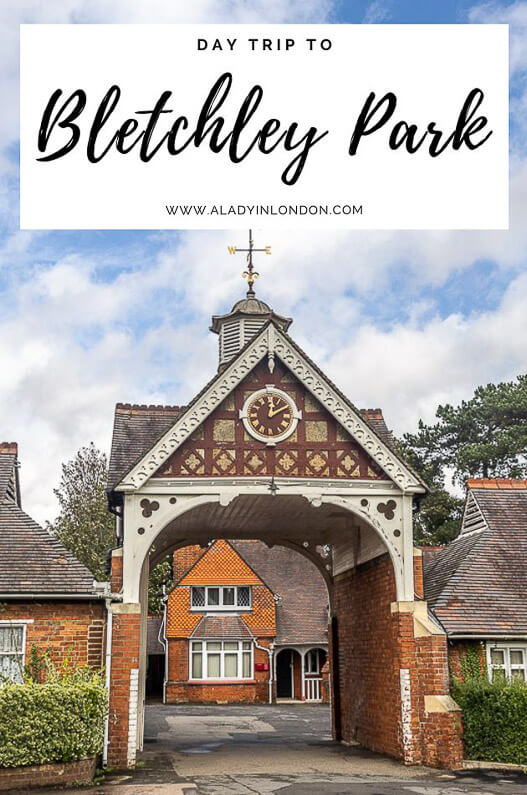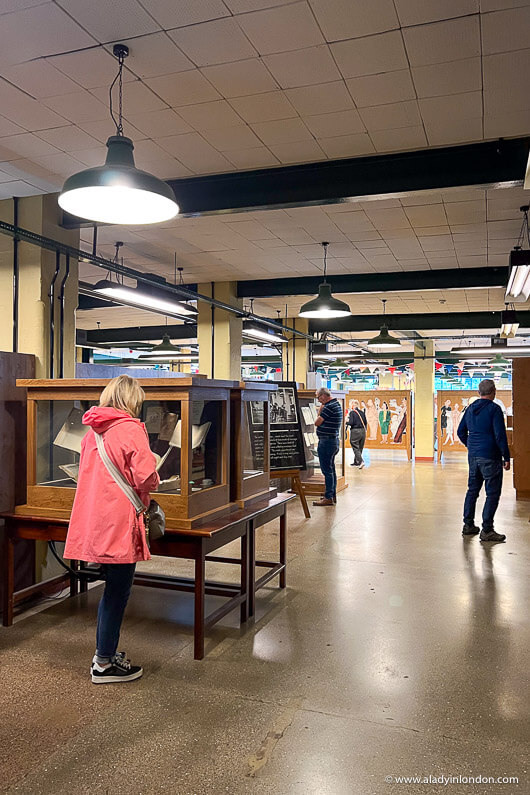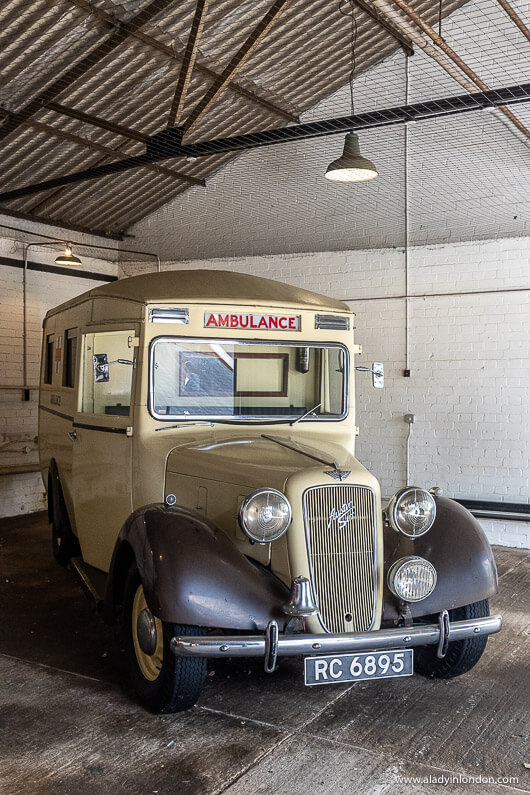Today I want to bring you my guide to taking a day trip to Bletchley Park from London. This English country house in Milton Keynes was the top-secret home of Britain’s World War II codebreakers, and it’s considered the birthplace of modern computing. Spending a day here will allow you to learn about Allied intelligence and unsung heroes like Alan Turing.
Day Trip to Bletchley Park
Bletchley Park is located just north of London. It started life in the the 1870s as a family home surrounded by peaceful grounds. It has good road and rail links, and it’s situated between the academic centers of Oxford and Cambridge.
For these reasons, it was chosen to house British codebreaking operations in the Second World War. Historians estimate that the codebreakers’ efforts shortened the fighting by up to 2 years and saved thousands of lives.
Today Bletchley Park is a museum and heritage attraction. Visitors come from all over the world to see the offices where the codebreakers worked and learn about the methods and machines they devised to intercept encrypted enemy communications.
How to Get to Bletchley Park from London
If you’re wondering how to get to Bletchley Park from London, you can easily reach it by train. Bletchley station is so close to the UK capital you can even make it a half-day trip from London if you want to.
Bletchley is a 35-minute train ride from London’s Euston station, and services run direct. Make sure to book tickets in advance to get the best prices, and check timetables so you can catch a fast service that doesn’t stop at every station on the way.
Once you reach Bletchley, it’s less than a 5-minute walk along Sherwood Drive to reach the entrance of Bletchley Park. There’s good signage en route, so you should have no problem finding it.
Bletchley Park Tickets
Another nice thing about taking a day trip to Bletchley Park from London is that there’s no need to pre-book tickets in advance. You can just show up and buy them at the front desk when you arrive (you can also book them online ahead of time).
I’ve purchased my ticket on arrival, and now I’m excited to delve into this secret world of cryptography and codebreaking.
Bletchley Park Tour
After buying my entry ticket, I pick up an audioguide and start my self-guided tour of Bletchley Park (there are 1-hour guided tours you can book at the Information Desk, too).
Following the map I received at the ticket desk, I start my tour in the visitor center in Block C. There’s a permanent exhibition here with a broad overview of Bletchley Park and the codebreaking work that went on here during World War II.
Afterwards I venture out into the grounds. The buildings here are close together, and the whole place is centered around a small lake.
The Mansion
I walk up to the mansion, which was the original Victorian country house on the property. Inside I discover rooms full of exhibitions on topics like the early days of Bletchley Park and the stories of the veterans who worked here during the war.
I also see Commander Denniston’s Office (he was in charge here in the early years) and the library. Both have been recreated to look the way they were in the 1940s.
Chauffeur’s Hut, Garages, and Stableyard
From the mansion I make my way to the Chauffeur’s Hut and the Garages. There’s information in both places about the drivers and messengers who worked here during the war.
The Garages are full of vintage cars from the era, including one that featured in the 2001 movie Enigma starring Kate Winslet and Dougray Scott. It’s one of many films about this place, including The Imitation Game.
From the Garages I walk into the Stableyard, a collection of picturesque cottages and buildings where the first codebreakers at Bletchley Park broke into the German military Enigma cipher machines.
The Huts
Once I’ve explored the Stableyard, I head over to a collection of outbuildings called huts. They were used as offices during World War II, and they’re full of everything from exhibitions to re-created workspaces.
I start at Huts 11 and 11A, which contain detailed information about the Bombe machines that were developed by Alan Turing and Gordon Welchman.
The Bombes were critical in the success of Bletchley Park’s operations, as they sped up the daily search for Enigma cipher keys.
From there I head to Huts 3 and 6. They’re restored World War II codebreaking and intelligence huts, and the series of small rooms inside contains exhibitions and information about the work that was done here.
The last hut I visit is Hut 8. It was the German naval Enigma codebreaking building, and it contains Alan Turing’s recreated office.
Buildings, Blocks, and Museums
My next stop is the Teleprinter Building, where I watch an immersive film that gives an overview of Bletchley Park’s role in the planning of the D-Day invasion on June 6th, 1944. It’s interesting to hear the famous story from an intelligence perspective.
After sitting down to watch the film, I walk over to Block A. It’s called The Intelligence Factory, and it’s lined with small rooms full of information and interviews about how Bletchley Park operated on a large scale with a workforce of 9,000 people.
I particularly enjoy learning about the work of the women who were here during the war. Around 7,500 women worked in Bletchley Park, and they constituted roughly 75% of the workforce.
Learning about their roles and how they felt about the work they did is fascinating. Secrecy was paramount, and many of them had little idea of the impact of their jobs until after the war.
Leaving Block A, I enter Block B. There’s a museum here with a lot of information about Alan Turing, the development of GCHQ (Government Communications Headquarters), and the German Lorenz ciphers.
My last stop is the National Radio Centre (NRC). This small museum houses exhibits that present the history of radio communication from its inception into the future.
When I’m finished seeing it, I walk back to the visitor center in Block C and return my audioguide. I pass the gift shop and cafe as I exit, then make my way back to the train station (if I wanted to, I could visit The National Museum of Computing down the street).
How Much Time To Spend at Bletchley Park
In all, I’ve spent 5 hours here (the map I received at the entrance says most visitors spend 4-5 hours). I could have spent much longer, though, and I wish I’d paced myself better or left myself more time at Bletchley Park.
There’s a HUGE amount of information here, and every building could take ages to see if one read each sign, plaque, and board in detail.
Thankfully, tickets are good for a year. I might just have to take another day trip to Bletchley Park to dig deeper into the world of codebreaking, ciphers, and World War II history.
Bletchley Park Day Trip from London
When I reach the station I board a train to London, watching the countryside scenery slowly build back up into an urban landscape as I go.
I’ve enjoyed my Bletchley Park day trip from London, and I still can’t believe how much there is to see, learn, and be amazed by here. Now that I know how easy it is to visit this place, I’m sure I’ll be back soon. I hope you get a chance to do the same.
Find this post helpful? Buy me a coffee!
New here? Join thousands of others and subscribe to the A Lady in London blog via email.
Pin it!











